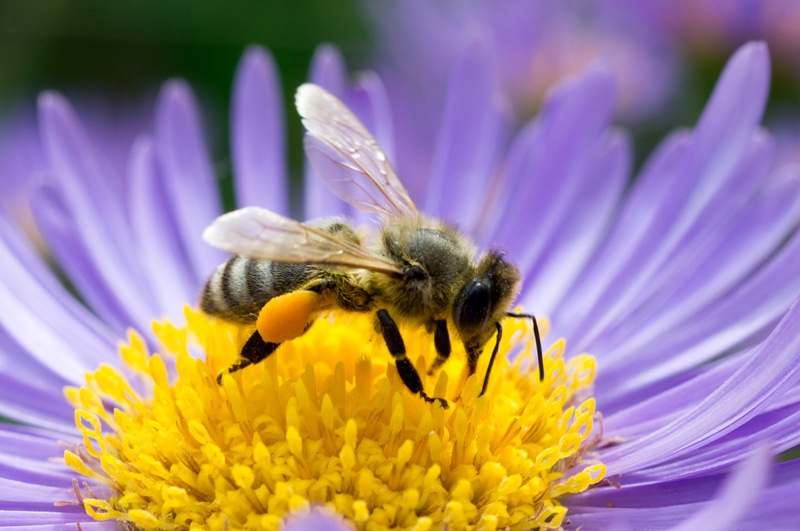When you purchase through links on our website , we may earn an affiliate commission . Here ’s how it works .
If deadly computer virus and fungi were n’t enough , honeybees in North America now must also deal with a fly parasite that induce them to leave their hive and expire after wandering about in a zombie spirit - like stupefaction , a new subject field shows .
Scientists previously found that the parasitic fly ball , Apocephalus borealis , infects and in the end kills bumblebees and paper wasp , while the " decapitating tent-fly , " an louse in the same genus , implants its nut in ants , whose heads then crop up off after the fly larvae devour the ants ' brains and dissolve their connective tissue paper . Now researchers have discovered honeybees parasitized byA. borealisin 24 of 31 sites across the San Francisco Bay arena , as well as other commercial hives in California and South Dakota .

An A. borealis larvae crawls out of a dead honeybee.
transmissible tests revealed that some of the bee and flies were infected with deformed wing virus and the fungusNosema ceranae , both of which have been entail incolony collapse disorder(CCD ) . The scientists believe that more enquiry into the parasitized bees and their behavior could yield young insights into the withering disorderliness .
" understand lawsuit of the hive abandonment behaviour we document could explain symptom associated with CCD , " the researchers compose in their study , published today ( Jan. 3 ) in the journal PLoS One .
An infectious tent-fly

The femaleA. borealisflies will throw in their eggs into a honeybee ’s venter presently after come in into contact with the bee , the researchers saw in their laboratory . About seven days later , up to 25 mature fly front larvae emerge from the area between the bee ’s head and pectus . In the wild , no more than 13 larvae were detect busting from a single honeybee .
The researcher found that parasitized bees in the natural state abandon their nettle rash and congregate near light sources , where they get tobehave queerly . A bee near death typically will sit in one station and curl up , but these infected bees walked around in Mexican valium , appearing disorient and with fiddling equilibrium , often not being able-bodied to stand up .
" They kept elongate [ their legs ] out and then falling over , " Andrew Core , biology graduate pupil at San Francisco State University and co - writer of the study , say in a command . " It really paint a picture ofsomething like a zombie . "

Core and his colleagues found that the honeybees most likely to becomeinfected by the parasitewere the single that left their hives to forage at dark , rather than the daylight foragers . The researchers also discovered fly pupa near dead bees at the bottom of their science lab hive , suggesting thatA. borealiscan multiply within a hive and potentially taint a pregnant queen bee .
Many question still remain
It ’s currently unclear how the tent flap are changing the bees ' conduct , though the researchers hypothesize that the fly somehow affect the bees ' circadian rhythm , or natural mean solar day / dark cps . The investigator also do n’t hump whetherinfected beesare leaving the hive to protect other bees , or whether hive mates smell the contagion and force the dying bee out .

" A draw of touching and tasting run on in a beehive , " star researcher John Hafernik said in a program line . " And it ’s certainly potential that their conscientious objector - prole are finding them and can assure that there ’s something wrong with them . "
Perhaps most significant , scientists do n’t yet sympathize the role , if any , that the parasitical tent flap play in the transmitting of the CCD pathogens . Are the flies further harming the bees by spreading deformed wing computer virus andN. ceranae , or do they actually prevent the pathogens from multiply by quickly killing their hosts ?
Whatever the case , the researchers believeA. borealisis in all likelihood a novel threat for the honeybees . " Honeybees are among the well - studied insects in the world , " Hafernik said . " So at one spirit level , we would expect that if this has been a long - condition parasite of honeybees , we would have noticed . "















